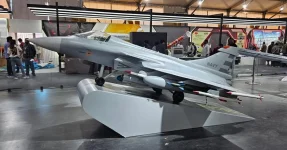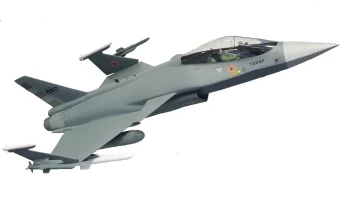- Views: 2K
- Replies: 34

The Aeronautical Development Agency (ADA) has locked down the design for India's Twin Engine Deck Based Fighter (TEDBF). The finalized design, which was initially revealed at Aero India 2023, draws inspiration from the Dassault Rafale while incorporating innovative Diverterless Supersonic Inlets (DSI).
This decision marks a significant step in the TEDBF program. At Aero India 2023, ADA presented an updated design featuring a rounded nose cone, a departure from the earlier stealth-focused angled concept. This revised configuration, with its leading-edge extensions (LEX), canards, and DSI, is now confirmed for the production model.
Sources indicate that this design is the frontrunner, awaiting final approval from the Cabinet Committee on Security (CCS). With a projected budget of ₹14,000 crores, the TEDBF program aims to equip the Indian Navy with a domestically developed carrier-based fighter, significantly enhancing its combat capabilities.
While the TEDBF shares a resemblance with the Rafale in its overall shape and canopy design, the integration of DSI intakes sets it apart. This technology offers potential benefits in engine performance, weight reduction, and a smaller radar cross-section – advantages not present in the Rafale.
DSI intakes streamline airflow to the engines, boosting performance and potentially minimizing the aircraft's radar signature, a crucial element in modern aerial warfare. This technology represents a significant advancement in aircraft design and highlights the TEDBF's focus on cutting-edge capabilities.
The Indian Navy plans to initially procure at least 80 TEDBF aircraft, with the possibility of increased numbers if the Ministry of Defence (MoD) approves the construction of a third aircraft carrier. This underscores India's commitment to strengthening its maritime power projection.
An ADA official emphasized that the design selection reflects a commitment to providing a high-performing, cost-effective, and technologically advanced fighter for India's naval forces. This decision also aligns with India's drive for self-reliance in defence production, reducing dependence on foreign-sourced military equipment.
The TEDBF is slated to replace the aging MiG-29K fleet currently deployed on the INS Vikramaditya and INS Vikrant. It is designed for a multitude of roles, including air superiority, maritime strikes, and electronic warfare, all tailored for the demanding environment of carrier-based operations.


